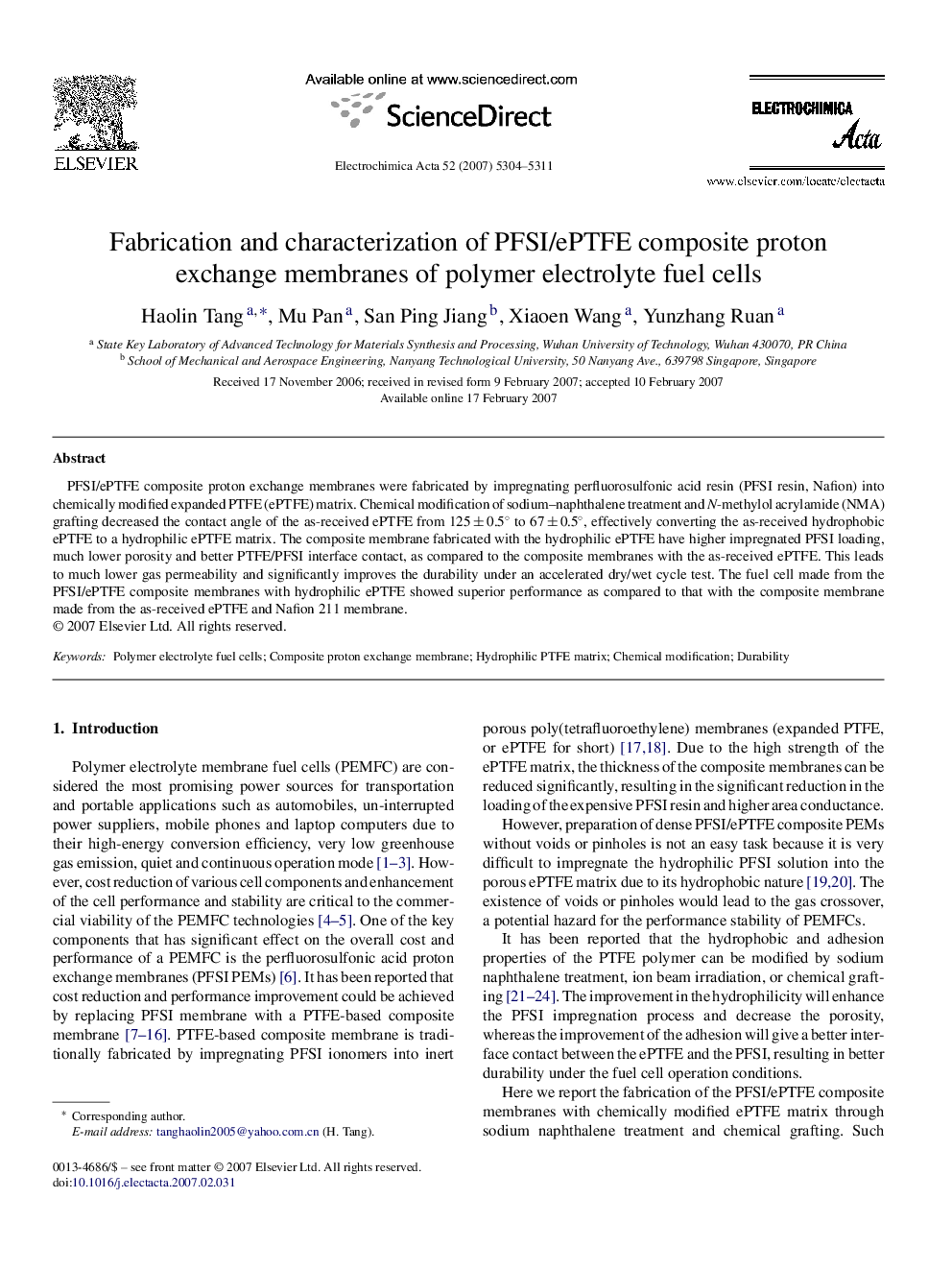| Article ID | Journal | Published Year | Pages | File Type |
|---|---|---|---|---|
| 194467 | Electrochimica Acta | 2007 | 8 Pages |
PFSI/ePTFE composite proton exchange membranes were fabricated by impregnating perfluorosulfonic acid resin (PFSI resin, Nafion) into chemically modified expanded PTFE (ePTFE) matrix. Chemical modification of sodium–naphthalene treatment and N-methylol acrylamide (NMA) grafting decreased the contact angle of the as-received ePTFE from 125 ± 0.5° to 67 ± 0.5°, effectively converting the as-received hydrophobic ePTFE to a hydrophilic ePTFE matrix. The composite membrane fabricated with the hydrophilic ePTFE have higher impregnated PFSI loading, much lower porosity and better PTFE/PFSI interface contact, as compared to the composite membranes with the as-received ePTFE. This leads to much lower gas permeability and significantly improves the durability under an accelerated dry/wet cycle test. The fuel cell made from the PFSI/ePTFE composite membranes with hydrophilic ePTFE showed superior performance as compared to that with the composite membrane made from the as-received ePTFE and Nafion 211 membrane.
